Sanctuaries
Can we successfully return dolphins to the wild after they have lived in captivity?
Release back into the wild takes a great deal of knowledge, expertise and preparation. But it can be done, and often is successfully done. In cases where the individual has not been in captivity too long, nor become too acclimated to living in an unnatural environment, they can get to live in the ocean again
As a first principle, all dolphins should be given the chance to try to re-learn the skills that they need to survive in the wild.
Unfortunately, in some cases this simply isn’t possible, especially for those born in captivity. Therefore, we need an alternative. If we hope to successfully have these dolphins taken out of the tanks and show pools they’ve been confined in, we need to be able to provide a more natural environment – one where they will never again have to perform tricks for our entertainment.
While there are sanctuaries for many land animals who are being retired from zoos and circuses, there are few options for whales and dolphins at this point. Without permanent sanctuaries, they will be confined to concrete tanks for the next 20–30 years, or for as long as they live. Fortunately, a great deal of work is being done in this area, and a number of projects are currently underway. The challenges are daunting, and these initiatives will cost considerable sums of money, but this is something we owe these creatures, who’ve had their liberty unjustly taken away from them.
In North America, The Whale Sanctuary Project is working to establish a model seaside sanctuary where whales and dolphins can be rehabilitated, or can live permanently in an environment that maximizes their well-being and autonomy and is as close as possible to their natural habitat. This is a noble mission of enormous value to the cetaceans we hope to retire from the entertainment facilities in which they’re being held. Over the longer term, we will also need such facilities for those who’ve been rescued from the ocean and are in need of rehabilitation or permanent care.
An important aspect of this project is that it is intended to serve as a model for similar efforts elsewhere and by others. Advising the project are subject matter experts from a number of diverse fields, including: marine mammal biology and behavior, veterinary medicine, engineering, law and public policy. The output will be a plan which lays out the groundwork for the creation of permanent cetacean sanctuaries. This will be intended to guide the work of any future organization whose purpose will be to build and manage similar sanctuaries. For example, how to ensure their financial sustainability, and how to begin the process of identifying suitable locations using established sanctuary site selection criteria.
Information produced by this project will be communicated out to “all stakeholders involved in the field of marine mammal protection”, as well as to the public. The project hopes to serve as a repository of expertise, established by sound scientific methodology, and to be able to encourage other facilities to adopt these practices that have been found to “enhance and optimize the quality of life of individual cetaceans in their care”.
Please support this project – and others like it that will emerge around the world – if you can. This is groundbreaking work that has the potential to deliver enormous improvements to the quality of life of whales and dolphins who are delivered from captivity. Not only for this project, but also for all the others it will help make possible in the future.
Notable notes on seaside sanctuaries
- There are presently about 3,000 cetaceans in captivity around the world. As public attitudes continue to change we will want to release these highly intelligent and social animals from their concrete tanks, and seaside sanctuaries will give us places for them to go.
- These will likely be private endeavours, so development of the site infrastructure, and the long-term care of the animals, will need to be covered by “endowments, sustaining donations, and other revenue-generating opportunities like educational materials and programs”.
- Sanctuaries will probably be open to the public, and will offer outreach, education and conservation programs. A key feature to keep in mind, however, is that they will not be entertainment facilities. The needs of the whales and dolphins will always come first.
- If you want to help, join the conversation. Raise awareness of the plight of our cetacean brothers and sisters, and the need for these facilities. If you can, donate to the Whale Sanctuary Project. And if you believe you have skills that would be of value to this effort, look them up – they’ll be more than happy to hear from you.
Finally, consider what this is really all about, if you’re a person who’s inclined to think about the deeper ‘Why?’ of things. The Whale Sanctuary Project is about restoring freedom and dignity to socially complex species, from which they were forcibly dispossessed by ours.
“By restoring to these amazing animals the ability to live their lives according to their own nature, we dignify not only them but also ourselves. We need a new, more respectful relationship with wildlife and nature if we wish to survive on Earth. Sanctuaries like this can help build that relationship.”
Amen.


